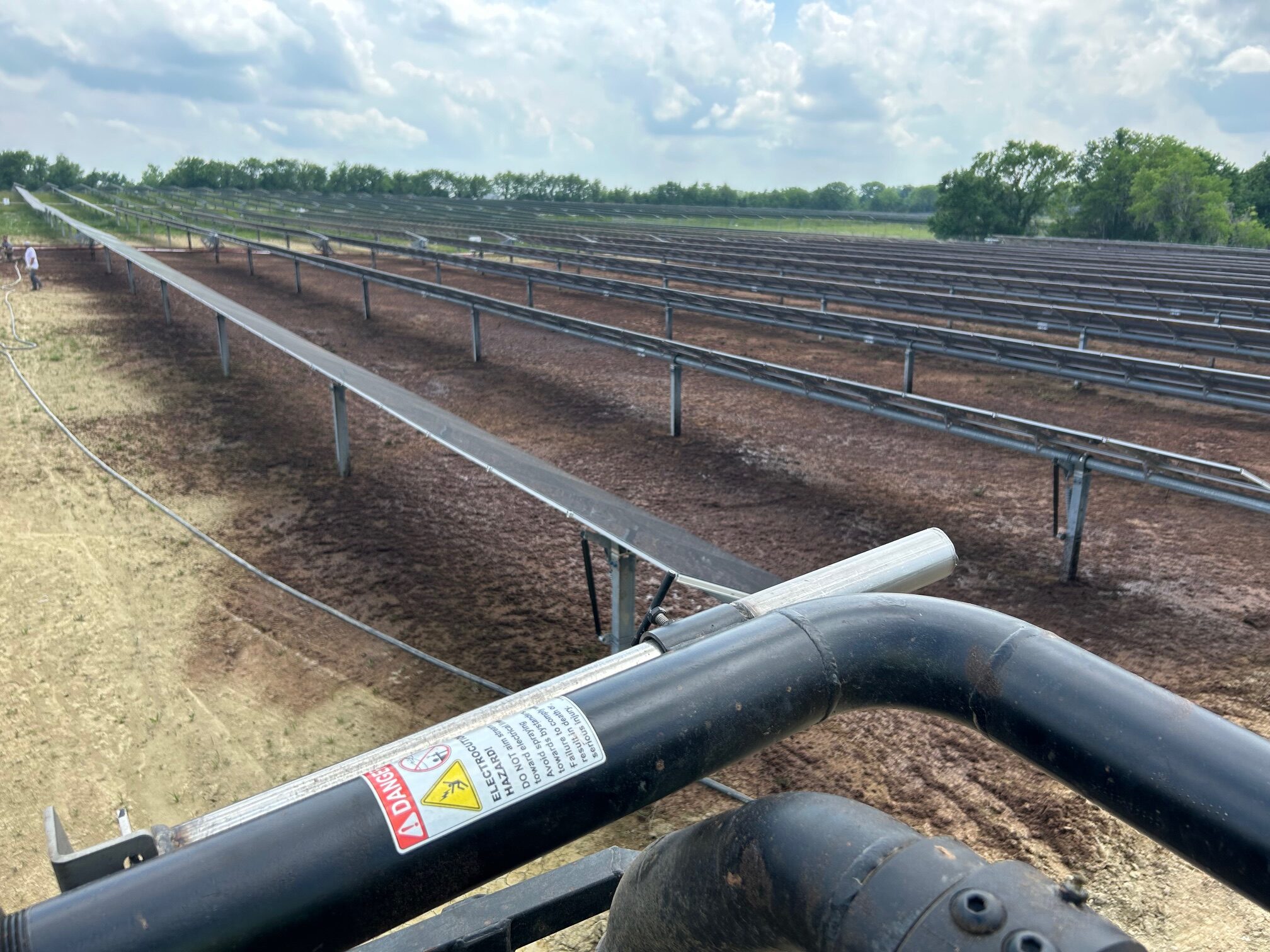Solar farms are a common way to maximize the solar energy output of a given area by installing a large network of solar panels in close proximity. These solar farms help produce large amounts of clean, renewable energy. A common challenge faced by solar farms, however, is that of erosion. Erosion threatens the structural integrity of solar equipment installed on solar farms. Because of this, erosion control is an important part in maintaining a solar farm.
When facing erosion, hydroseeding is one of the most common and effective solutions. In fact, it is one of the most common ways to control and limit erosion on solar farms. Because of its quick and easy installation, effectiveness, and cost-efficiency, hydroseeding is often considered the best choice for solar farms when compared to sodding and seeding. Let’s take a closer look at how hydroseeding controls erosion for solar farms.
How Hydroseeding Controls Erosion
Hydroseeding is most commonly used as a means for erosion control. Because of the versatile nature of hydroseeding’s application process, hydroseeding is used on a wide variety of environmental projects, including for solar farms. The application process for hydroseeding involves spraying the hydroseeding slurry onto the designated and prepped area of soil. This allows hydroseeding to be used to cover wide open fields, as well as industrial areas that are more difficult to reach or on steeper slopes.
The erosion control process of hydroseeding involves the rapid growth of a root system that holds soil together. Essentially, the erosion control process goes as follows. First, the area that needs grass for erosion control is prepped. This process includes clearing the area, tilling the soil, and any other steps that need to be taken to prepare it for hydroseeding. After this, the hydroseeding slurry is sprayed over the area.
The hydroseeding slurry consists of several key ingredients, including local grass seeds, fertilizer, and water. Once the hydroseeding slurry is applied to the area, the seeds begin to take root. As the network of grass roots expands, grass begins to sprout and cover the area with luscious green grass. This network of roots serves to hold soil in place, securing it from eroding in the case of extreme weather, including heavy rain & wind. The erosion control provided by hydroseeding is valuable for job sites and other areas where soil stability is integral.
Hydroseeding for Solar Farms
When it comes to solar farms, erosion control is very important. The heavy equipment involved at solar farms is planted firmly into the ground, typically in large open fields. However, without proper erosion control, this expensive equipment can be liable to take damage and lose foundational integrity.
Hydroseeding on solar farms helps prevent erosion by locking the solar farm’s soil in place with a quickly growing network of grass roots. Because solar farms are typically in open fields that are susceptible to frequent and sustained gusts of high speed wind, erosion can become a serious problem. By investing in the erosion control created through hydroseeding, solar farm managers better secure the structural integrity of their facility.
Solar Farm Hydroseeding with Burns Environmental
Burns Environmental is proud to be the authority for commercial hydroseeding in Alabama and Georgia. Solar farms seeking erosion control solutions can turn to the experts in hydroseeding at Burns Environmental. Our experienced team has been serving the erosion control needs for work sites, commercial projects, solar farms, and residential areas throughout Alabama and Georgia for years.
With a commitment to excellence and efficiency, the hydroseeding team here at Burns Environmental is happy to help control erosion and grow beautiful green grass that helps protect your investment into your solar farm. For more information on our commercial hydroseeding services for solar farms, get in touch with us today, and we will be happy to get started.

